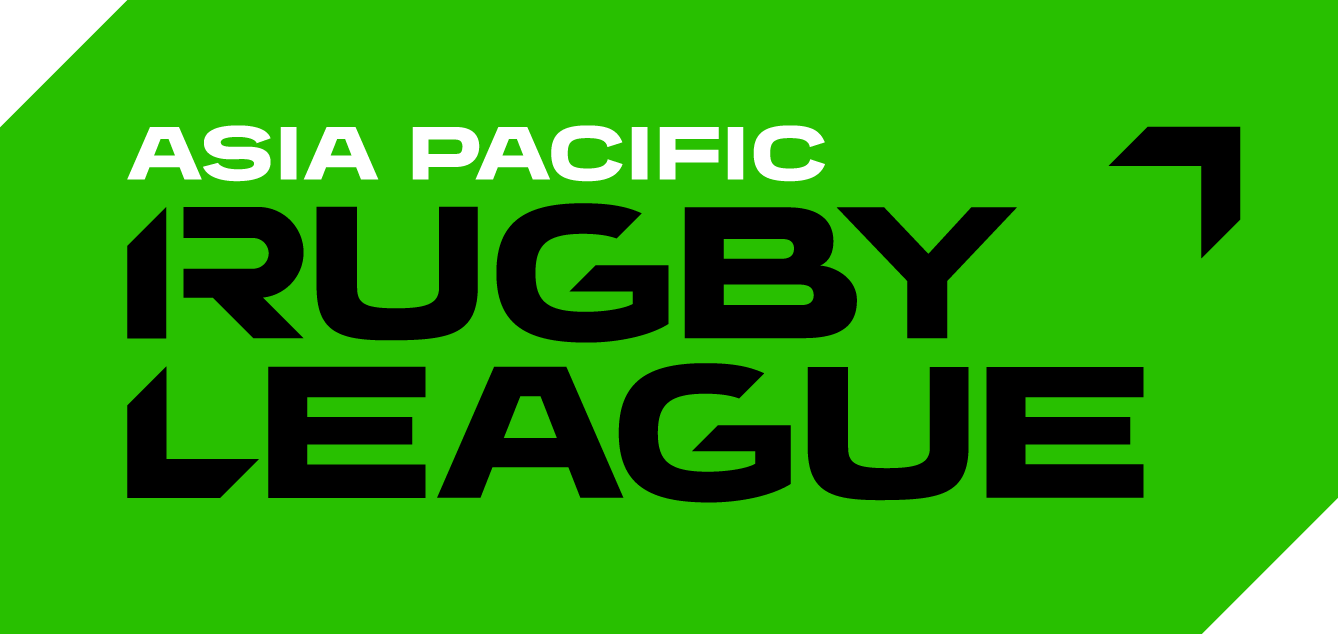
How the NRL's Multi-Cultural Round may look in the future
As the NRL celebrated Multicultural Round, a diverse array of migrant communities – including Chinese, Indian, and Sri Lankan - are being encouraged into Rugby League by a new arm of the sport.
Heritage Rugby League (HRL) is an offshoot of the NSWRL that is expanding nationally, giving additional structure, frequency and support to cross-cultural matches previously played on an ad-hoc basis.
HRL president Javed Hamidi – who is from a Pakistani and South African family – has been the driving force behind a dedicated group of volunteers, building on decades of groundwork by former NRL International Development Officer, Panthers and Bulldogs player Tas Baitieri.
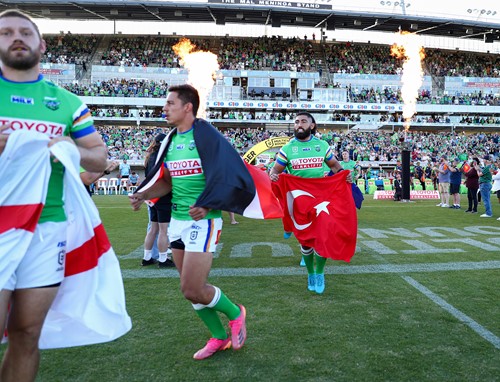
Canberra Raiders forwards Elliott Whitehead (England), Joe Tapine (New Zealand) and Emre Guller (Turkey) celebrate their heritage (NRL Photos)
“So far this year we have seen fixtures between a multitude of nations not considered traditional ‘hotbeds’ of the sport, including games such as Thailand v Japan, and Macedonia v Philippines,” Hamidi said.
“In truth, teams like the Philippines have been operating 15 years and doing a lot of work in the background, but we are also seeing some newer, interesting teams emerge like Sri Lanka.
“The Sri Lankans held a tag rugby league game against Japan and, anecdotally, we are hearing there are quite a few full-contact players eligible for Sri Lanka who don’t realise there may be opportunities for them.
“A key goal of Heritage Rugby League is linking athletes from multicultural communities in Australia with rugby league associations in their ancestral country – with a possible outcome being players representing at future World Cups.
“A big task for us is growing awareness that representative opportunities exist for dozens of heritages people haven’t yet seen at the World Cup, and there are also communities out there with sufficient players who have not yet formed a squad.”
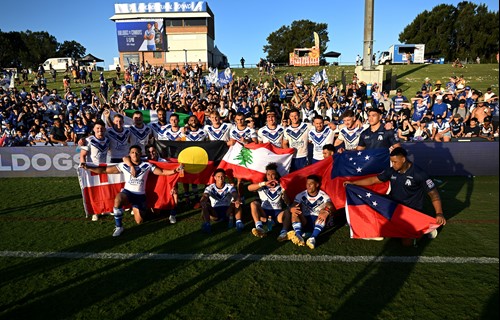
Canterbury Bulldogs players celebrate the cultures within the team (NRL Photos)
Engaging the Chinese-Australian community presents an interesting opportunity for rugby league.
The late Paul Broughton OAM, one of the most important coaches and administrators of the past 50 years, was passionate in supporting the idea that the game had a future in Chinese communities.
Arguably the most famous player of part-Chinese descent was former Queensland and PNG halfback Adrian Lam, but others such as Brian To’o, Alex Chan, Joe Chan and Michael Chee Kam have graced rugby league fields around the world.
The first Chinese player in the top flight was Billy Hong, who played for the Roosters in the 1930s.
Recently-added HRL committee member Patrick Skene is a leading consultant for sports bodies in driving participation and fan engagement in multicultural communities. He believes it is vital that the Chinese community forms part of the game's strategy.
“There are 1.5 million Australians of Chinese heritage in Australia and a lot of them love rugby league and play touch footy, so there is an opportunity there. The community needs accessible heroes to move forward and a Heritage Rugby League team would be a great start.” said Skene.
“The Indian community is showing a lot of interest in rugby league and anybody that has ever watched the sport of Kabbadi live, knows there is a definite propensity for contact sport.
“In the not-too-distant future we may have a Heritage Rugby League clash of the Asian superpowers.”
While representative teams already exist for communities that may initially appear obscure – the likes of Cambodia, Ecuador, Niue and South Sudan – there are other nations calling out for coaches and committees to lead the charge.
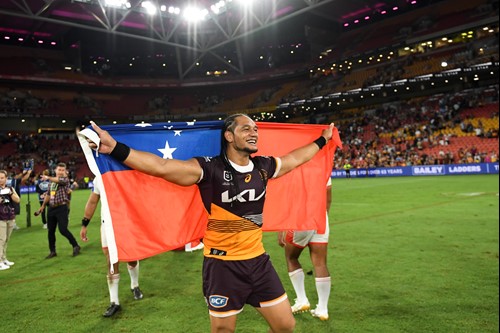
Brisbane Broncos prop Martin Taupau shows his Samoan pride (NRL Photos)
Data shows several nations without squads could easily piece together 17-plus athletes in either men’s or women’s competitions.
“Serbia already has a national program, but Croatia doesn’t for example, and there are ample players of both backgrounds,” fellow HRL committee member Robert Burgin said.
“Argentina is a handful of players away from having a full team in Australia, Portugal has been in hibernation after the death of their founder, but could re-form a squad; there are Syrians, Palestinians, Egyptians and Indonesians out there as well, for example.
“Germany is looking to do ambitious things abroad and that’s another community within Australia with depth in numbers.
“As recently as a month ago I was involved with a team that had three players of East Timorese background, a strategic nation from an Australian foreign policy perspective.”
This week Kangaroos and Panthers star Nathan Cleary discussed his Ukrainian heritage, as the nation of his maternal lineage continues to search for players amid the backdrop of military conflict.
Multiple nations in Europe are on the lookout for eligible athletes as World Cup 2025 qualifiers get underway this year, including for Turkey, Malta, Ireland, Greece, the Netherlands, and Spain.
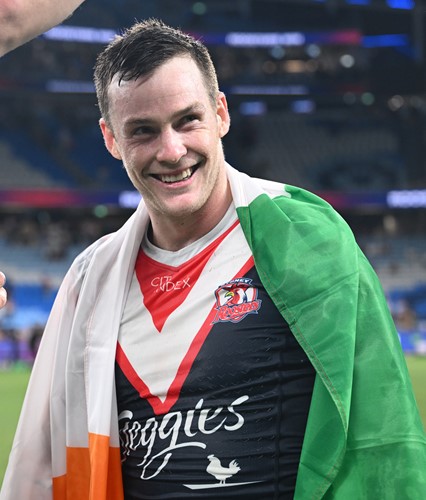
Sydney Roosters five-eighth Luke Keary parades the Ireland flag after the St Patricks Day clash with South Sydney (NRL Photos)
To qualify to represent a nation, athletes can qualify via their birthplace, or the birthplace of their parents, grandparents, or adoptive guardians. Residents of a nation for five years can also submit a claim of eligibility.
Coaches, administrators and volunteers are also strongly encouraged to get involved.
For Hamidi and his team at HRL, there is compelling strength in cultural reconnection and sustenance.
“A lot of players from migrant families can drift from their heritage and culture, and playing with one of our teams connects them right back into the source and gives them pride and knowledge about their cultural identity,” Hamidi said.
“There is a real magic in that.”
